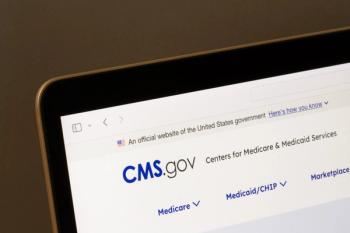
New Primary Care Model Leveraging Pharmacists Can Curb Health Costs
NACDS praised the new Kaiser Permanente model, which utilizes pharmacists and pharmacy technicians to save significant health care costs.
NACDS is praising a new Kaiser Permanente (KP) primary care model that utilizes pharmacists and pharmacy techs, along with other avenues, to save significant health care costs.1
In the current issue of
KP recently added the ability for pharmacists to access laboratory data and, using protocols created by physicians, “make many of the medication changes needed, saving doctors even more time.”2
“The new model enables each physician to economically provide continual care for about 1800 patients-30% of whom have 1 or more chronic diseases-that’s of much higher quality than conventional primary care. The doctor knows exactly what the medical assistant is doing, the specific drugs the pharmacist is titrating (fine-tuning the dosage of), and the preventive services the IT voice and text systems will encourage,” the article said.2
“If anything, pharmacists’ extensive education empowers them to do even more than is contemplated in this article,” NACDS President and CEO Steven C. Anderson wrote in an opinion piece on
Anderson calls for federal and state policy changes to allow pharmacists to practice at the height of their education; for the ability to optimize care models by hiring more pharmacy technicians and allowing them to perform a broader array of appropriate functions; and for fair reimbursement for pharmacies to prevent pharmacy closures that diminish patients’ access to care.1
“It should be lost on nobody that the Harvard Business Review article also emphasizes the role of physician assistants, whose functions free up physicians to engage in more clinical patient care. This supports our case that pharmacy technicians need to be empowered through policy changes to help free up pharmacists’ time,” Anderson said.1 “For no good reason, barriers to the use of technicians in the pharmacy setting are far more oppressive than barriers to the use of technicians in other professional settings.”
NCPA CEO B. Douglas Hoey, RPh also supports the use of pharmacists in primary care models. “NCPA knows pharmacists improve patient outcomes and ensure appropriate medication use, particularly in value-based contracts,” Hoey told Drug Topics®. “Innovation coming out of pharmacies that belong to a CPESN USA network of clinically integrated pharmacies includes technicians taking on new tasks within their scope and employing community health workers to extend the reach of the pharmacy.”
KP’s new primary care model, implemented in California, Virginia, Maryland, and the District of Columbia, “significantly reduces costs and improves the quality of care,” according to the article.2
“Despite the investments required, the leveraged-primary-care model has increased KP’s operating margins, enabling it to offer nearly 5 million members of its network premiums that are 10% to 15% lower than its competitors’. The higher margins have also allowed KP to fund major capital investments (in excess of $1 billion a year), to fulfill its obligations to care for the under- and uninsured, and to finance training for the next generation of doctors,” KP said.2
References:
1. Anderson SC. Pharmacy Value in Harvard Business Review Article. Medium. February 7, 2020.
2. Pearl R, Madvig P. Managing the Most Expensive Patients. Harvard Business Review. January-February 2020.
Newsletter
Pharmacy practice is always changing. Stay ahead of the curve with the Drug Topics newsletter and get the latest drug information, industry trends, and patient care tips.





















































































































































